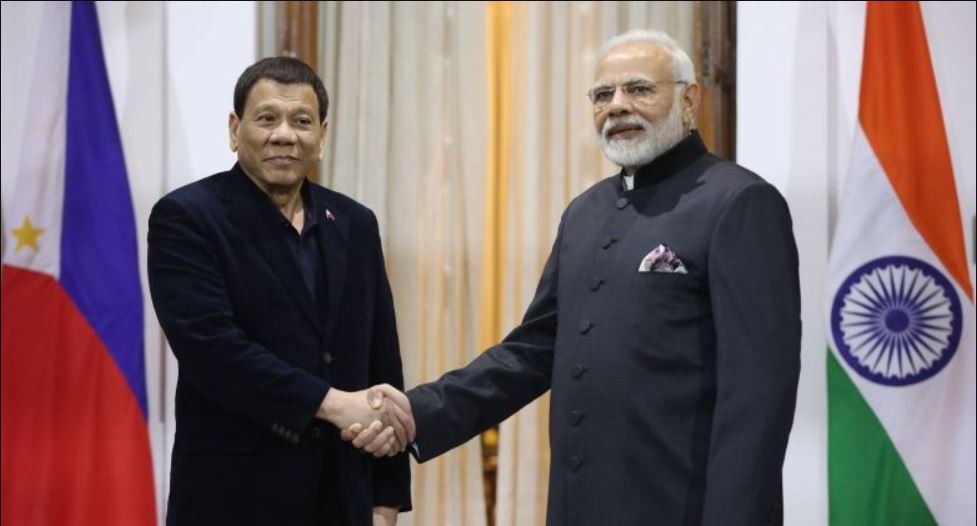Chinese belligerence in its vicinity is creating opportunities for new Asian alliances, especially in the Indo-Pacific Region. And New Delhi is getting fresh hints from the Philippines in Southeast Asia. This comes amidst the ongoing military stand-off between India and China in Eastern Ladakh and Chinese aggression in the South China Sea.
Recently, the Philippines Navy chief Rear Admiral Giovanni Carlo J. Bacordo thanked the Indian Navy for its “invaluable alliance”. Actually, the Indian Navy rescued a Philippines Navy ship after a fire broke out in its engine room. The Indian Navy repaired the ship free of cost at the Navy shipyard in Kochi.
India has also rescued the two Filipino Navy officers who got injured with second-degree burns. Both of them were rushed to INHS Sanjivani, the Naval Hospital at Kochi. One of the Navy personnel is still undergoing treatment and has been taken to a Bengaluru hospital.
In a letter addressed to the Indian Navy chief Admiral Karambir Singh, the Philippines Navy chief wrote, “Your support in this unfortunate accident is way beyond our expectations and it is a testament of your sincerity in deepening our Navy to Navy partnership. Rest assured that the Philippine Navy remains committed to this Partnership.”
The Philippines has also hinted at collaboration with India in the domain of maritime safety. Rear Admiral Bacordo added, “We hope to expand this relationship as we seek better ways to make our seas safer and more secure for everyone…fervent wishes for your continuing success in leading the Indian Navy’s sustained resolve to be a global maritime force.”
For the Philippines “make our seas safer” definitely means countering Chinese aggression and expansionism in the South China Sea. Beijing has been behaving aggressively in the South China Sea hampering the interests of the Philippines, Indonesia, Vietnam and Malaysia.
Manila is fed up of Chinese aggression in the maritime region, and has therefore been looking to distance itself from Beijing. The Philippines President Rodrigo Duterte was largely seen as a pro-China President, but he has clearly realigned ever since China pushed its revisionist claims in the strategic waterways.
Recently, he also rolled back his decision to pull out of the visiting forces agreement with the United States, a two-decades-old military pact between the two countries owing to the ‘political developments in the region.’
China routinely intrudes into the territorial waters and the Exclusive Economic Zones (EEZs) of other countries in the South China Sea. The Philippines even secured a favourable ruling against China from the Permanent Court of Arbitration in The Hague over the South China Sea disputes.
But China continues with its hawkish policies in the strategic waterways by claiming “historical maritime rights” under the ‘Nine-dash claim line’ theory in utter defiance of the international maritime law, that is, the UN Convention on the Law of the Sea.
The Philippines Foreign Secretary Teodoro Locsin Jnr also disclosed that Duterte had raised the issue of incursions with the Chinese President Xi Jinping, but “the reception was very cold”.
It is in this backdrop that the Philippines has played a very smart strategic move of seeking greater maritime collaboration with the Indian Navy. The Indian Navy is a formidable force that can contain the blue-water Navy ambitions of the People’s Liberation Army Navy (PLAN).
In fact, when the letter was written by the Philippines Navy chief, India was locked in a military stand-off with China in Eastern Ladakh. The Indian Army is standing up to the PLA’s aggression at the Line of Actual Control (LAC) and thus Manila wants to bring in the Indian Navy into picture.
Recently, India has signed several Logistics Support Pacts with key players in the Indo-Pacific like Australia and the United States. New Delhi is also looking to seal a Logistics sharing Pact with Japan. Therefore, India is a much bigger player in the Indo-Pacific Region which is a reason why countries like the Philippines would want India to enter the South China Sea.
It cannot be denied that India itself stands to benefit from such collaborations. The fact remains that a sizeable portion of Indian trade passes through the international waters of the South China Sea.
It is in India’s interest to ensure free navigation in the international waters of the strategic waterways, apart from creating a new front to poke China whenever the latter gets belligerent in the Himalayas.
